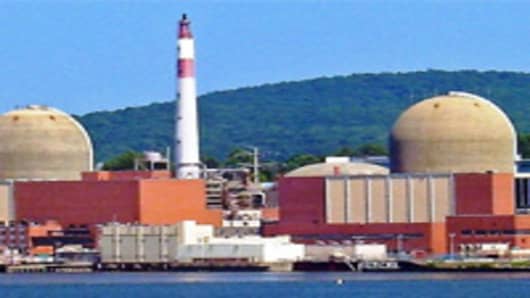As Japan's nuclear crisiscontinues to unfold, many are wondering whether the U.S.'s nuclear plants face a similar threat.
After all, there are an average of six magnitude 6 or greater earthquakes, and 57 magnitude 5 or greater earthquakes each year in the U.S., according to the U.S. Geological Survey.
Alaska is the most earthquake-prone state, and is one of the most seismically active regions in the world, experiencing at least one magnitude 7 earthquake almost every year and a magnitude 8 or greater earthquake every 14 years.
Still, the events that seem to stand out in most people's minds are the ones that strike in heavily populated areas such as the magnitude 6.7 earthquake that struck in Northridge, Calif., in 1994. That quake killed 33, injured 9,000 and displaced more than 20,000.
But even that quake wasn't as strong as the New Madrid quakes of 1811-12, which hit Missouri and Arkansas. That tremor was so strong it made the Mississippi River run backward for a time.
The following is a map from the USGS that shows where the greatest earthquake hazards are located. During a 50-year time period, the probability of strong shaking increases from very low—the areas shown in white—to moderate—the areas in blue, green and yellow. The highest risk areas are show in orange, pink and red.
However, the threat of a Japan-style nuclear accident may depend more on the nuclear reactor's design rather than its location.
Looking at an assessment the Nuclear Regulatory Commission has done of the seismic risksat the nation's nuclear power sites as well as some separate data supplied to the organization, MSNBC.com compiled a listof the nuclear reactors most at risk. The list was completely its own, as the NRC does not rank nuclear plants nor does it compare the facilites to each other.
The NRC study was published last year, and considered both the likelihood of a seismic event as well as the strength of the design of the power plant.
All the plants met the agency's requirement for being able to withstand the ground motions from the strongest earthquake that would be expected in the area around the plant.
MSNBC took the research and ranked the nuclear power sites by the chance of an event occurring. In all cases, the chances were pretty low.
While there will be numerous lessons that come out of Japan's nuclear disaster, one is already clear: the fundamental problem at the Fukushima Daiichi plant was that the facility lost electric power, its pumps went down and backup pumping systems failed.
And indeed, one proposed solution tothe current crisis is to restore power, and therefore the ability to restart the cooling pumps at the damaged nuclear plant.
Therefore, one of the key takeaways is that there could be other events that could cause a plant to lose power and see its cooling pumps fail, including violent storms or a terrorist attack.
In the U.S., nuclear power plants have several layers of redundant systems to assure that power is not lost at the facility.
According to NRC spokesman Scott Burnell, all U.S. nuclear plants must have a source of power that is off its own grid. There also have to be back-up generators that contain fuel for at least seven days, and these generators have to work even while being refueled.
All in all, the NRC requires that there be emergency power supplies that are available for about a month, which is about the time it takes to cool down a reactor. (Although the time required does vary based on a number of variables, including the reactor's design.)
Heat continues to be generated even after the nuclear reaction is halted. During the time that heat is being generated, it must be carried away or it will begin building up again.





